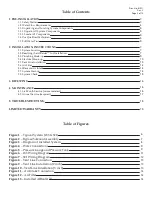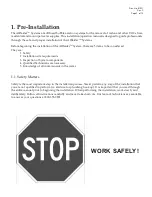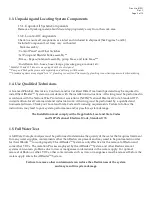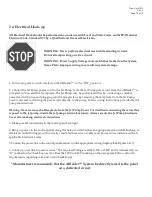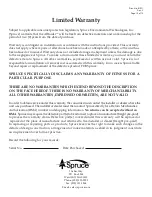
Doc. No. IN031
Rev. C
Page 13 of 19
2.5. Vent Line Installation
Use only 2”, 3” or 4” Schedule 40 PVC or equivalent pipe
for vent line. Follow all applicable AARST, EPA, and/or
State Standards for Radon or VOC venting.
1. Place the lid of the AIRaider
TM
on to the tank lining up the
clips with the clasps on the tank. Adjust clasps so that when
anchored to the clips the lid sits snugly on the tank gasket.
2. Connect vent line to AIRaider
TM
lid using the enclosed
rubber coupling (See Figure 8).
3. The vent line must be routed in a fashion that allows the
system to exhaust above the level of the roof (See Figure 9).
NOTE: When “Freeze Up” is possible, a minimum pipe diameter
of 3” is recommended (See Figure 10).
4. The vent line must be pitched back toward the system to
prevent condensation build up.
5. Cement all fi7ings to ensure no leakage will occur. Be certain
to use cement that is suitable for potable water applications.
6. Install weather cap on top of the vent line. This cap should
not restrict air flow and must prevent rain, snow and other
contaminants from entering the vent line.
Failure to install a proper vent line
may cause contamination of the
water, outgassing of contaminants
into the building, and/or limit
system performance.
* The Manufacturer has found that vent lines less than 250 equivalent
linear feet do not cause a decrease in contaminant removal percentages.
90° Bend = 15 Equiv. Linear Ft ; 45° Bend = 7 Equiv. Linear Ft.
Figure 10
Vent Line Installation
(3 inch)
Figure 8
Vent Line Connection
Figure 9
Vent Line Installation
(2 inch)


